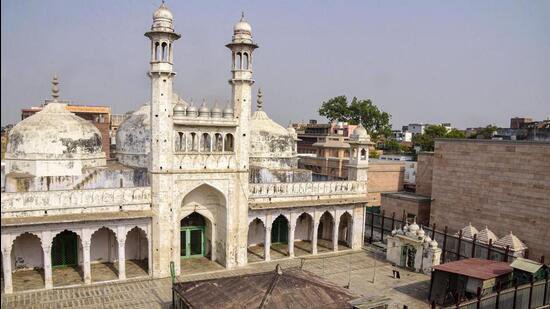India Today reported on Thursday that the Archaeological Survey of India (ASI) has suggested in its report that Varanasi’s Gyanvapi Mosque is built on a Hindu temple. Advocate Vishnu Shankar Jain, representing the Hindu side in the case, claimed that the report strongly suggests the existence of an important Hindu temple structure in the Gyanvapi Mosque complex, which is located next to the ancient Kashi Vishwanath temple.
“ASI has said that idols of Hindu deities and carved architectural members were found buried under the soil,” said Jai, who received the survey report this evening. “The existing architectural remains, decorated moldings on the walls, a large decorated gateway, a smaller gateway with a distorted image, and carved birds and animals for decoration inside and outside, show that the western wall was that of a Hindu temple.
Jain said an Arabic-Persian inscription found inside a room mentioned that the mosque was built during the 20th reign of Aurangzeb. Therefore, he said, it appears that the pre-existing structure was destroyed in the 17th century. “On the basis of scientific study survey of architectural remains, exposed features and artefacts, inscriptions, art and sculptures, it can be said that a Hindu temple existed before the construction of the existing structure. A report of total 839 pages by ASI Have been filed.”
“ASI said that the pillars and stucco used in the existing structure were systematically and scientifically studied for the expansion of the mosque. Parts of the pre-existing temple including pillars and stucco were reused with slight modifications. was used,” Jain said while sharing the findings by ASI.
The lawyer said that microscopic study of the pillars and plaster in the corridors showed that they were originally part of a pre-existing Hindu temple. “For their re-use in the existing structure, the carved figures on either side of the lotus medallion were distorted and after removing the stone mass from the corners, the place was decorated with floral designs. This was seen in the patient The northern and southern walls of the western chamber are in their original positions, supported by two similar plaster casts that still exist.”
Jain claimed that the ASI report also revealed that ancient Hindu temple inscriptions, written in Devanagari, Telugu, Kannada and other scripts, have also been found. “ASI has stated that during the survey, several inscriptions were observed on the existing and pre-existing structure. A total of 34 inscriptions were recorded and 32 stamped pages were taken during the present survey,” Jain said while reading the report.
“These are stone inscriptions from a pre-existing Hindu temple that have been reused during the construction and repair of the existing structure,” he said.
“The re-use of earlier inscriptions in the structure suggests that earlier structures were destroyed and their parts were reused in repairing the existing structure. These inscriptions depict deities like Janardhana, Rudra and Umeshwara. Three names are found.” The senior advocate added.
This survey was conducted to determine whether the mosque was built on a pre-existing structure of a Hindu temple. The court had ordered the survey after Hindu petitioners claimed that the 17th-century mosque was built over an already existing temple. The ASI had submitted its survey report in a sealed envelope to the district court on December 18.
(with inputs from agencies)

